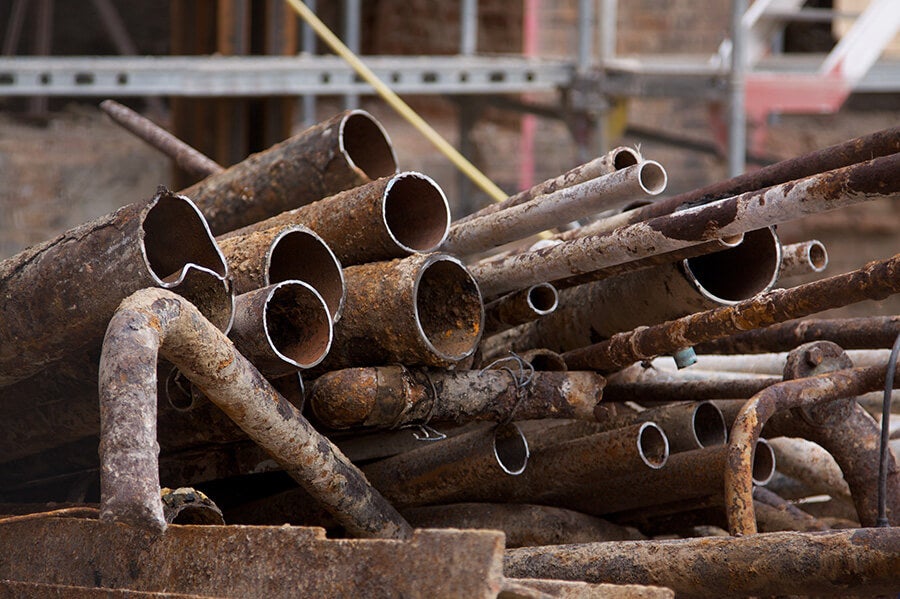The European Chemicals Agency (ECHA) has proposed including metallic lead (CAS 7439-92-1) in Annex XIV of the Registration, Evaluation, Authorisation, and Restriction of Chemicals (REACH) Regulation, meaning it will be subject to authorization. This inclusion is expected for May 2, 2022, and will present a major challenge to manufacturers, as this substance is used extensively in a wide variety of core industrial applications, such as glass manufacturing, batteries, and factory equipment. With the anticipated inclusion date quickly approaching, here’s how you can prepare now to avoid supply chain disruption by achieving REACH compliance.
Why Will Lead Be Included?
Lead has concerned ECHA for some time. In June 2018, it landed on the REACH Candidate List of substances of very high concern (SVHCs) due to its classification as a reproductive toxicant, meaning it has the potential to adversely affect fertility as well as offspring development. Due to its widespread use in manufacturing, ECHA identified this metal as a priority. ECHA estimates over 90 percent of the total amount of lead metal manufactured and/or imported into the EU will be in the proposed scope of the authorization requirement.
To understand more about the impact of REACH on your company, download our eBook.
Why Prepare for Changes Now?
Due to the widespread use of lead that will require ECHA authorization, the change will have significant ramifications for manufacturers. The expected inclusion of lead on the Authorisation List will require users to request authorization from ECHA or search for a replacement. Either of these options could take quite some time, which is why it’s imperative to start preparing for changes now.
Currently, lead usage exceeds 1 million metric tons per year in the European Economic Area (EEA). Batteries, for example, comprise 84 percent of lead use. Extruded and rolled products as well as ammunition also contain lead.
Understanding the Authorization Application Process
Applying for authorization can be complex. First, companies must understand whether their intended use of lead does not fall under existing exemptions. They also need to address the question of whether a substitution or replacement technology exists.
Once the manufacturer has determined the exact substance application, addressed the question of available substitution or replacement technology, and identified the supply chain actors that should be involved in mitigation or phase-out strategy discussions, the company must notify ECHA. The agency will take over and guide the applicant through the remaining preparatory steps if it concludes the application has validity.
The European Commission will then work on the application, and the applicant will be invited for hearings and discussion. In the event the commission refuses the application, the applicant has a grace period of 18 months to comply with the decision. If authorization runs out but continued use of the substance is required, a review report must be provided at least 18 months before the authorization due date.
Current Transition Periods Will Be Maintained
Despite the massive amounts of expected requests for authorization, ECHA has confirmed it will not propose deviation from the timelines used for other Authorisation List entries. From the date of lead’s inclusion on the Authorisation List, there will be either an 18-month, 21-month, or 24-month transition period, depending on the complexity and scope of affected uses and supply chains. An 18-month transition period is standard, while longer transition periods are set based on the expected complexity, the number of expected authorization requests, and the respective impact on industries. In the case of lead, manufacturers can most likely expect a 24-month period due to the complexity and significance of its impact on the supply chain.
Unlike other substances, there won’t be a prior review period for lead. This isn’t typical, but in this case, there’s widely available data on this substance.
The agency has also made it clear that lead will not fall under REACH Article §58(2) generic exemptions, as there’s no evidence that referral to other regulatory guidance could ever establish a safe-enough restriction on lead’s uses. Batteries will predominantly be affected; ECHA has stated it couldn’t gain enough insight into the impact of the upcoming Batteries Regulation in order to apply generic exemptions.
How Will These Timelines Affect You?
The inclusion of metallic lead on the Authorization List will have significant ramifications for manufacturers. For each continued use application, authorization requests must be created and prepared, or replacement technologies used or developed. Both of these options require significant investments of time and manpower, which is why it’s imperative to start preparing for changes now.
Complex manufacturers need deep insight into the use of lead in their supply chain. Standardized, validated, usable data that goes beyond your direct suppliers is a must to get to the roots of product composition. In the next section, we’ll explore how you can gain these deep insights into your supply chain for regulatory compliance and maintaining customer trust.
How Can You Start Preparing for This Change?
To understand how this new entry to the Authorisation List will affect your complex manufacturing operations, you need access to reliable data about lead within your supply chain. Manually tracking and sourcing this information requires an enormous amount of effort from manufacturers with global supply chains, and there’s a very good chance errors will occur with this method. A supply chain sustainability management platform automates this process for speed and accuracy. Existing Assent customers already benefit from the collection of relevant information regarding metallic lead, as it is subject to reporting duties in most of the major regulatory contexts.
Requesting authorization or replacing lead in your supply chain requires insights into where lead lurks. Automating your supply chain sustainability management processes allows you to gain these insights from deep within your supply chain, where risks to your company hide. Automation takes on even greater importance if you focus on full material disclosures or similar reporting approaches — understanding the exact context of lead use and the side-effects of replacement technologies is time-consuming and labor-intensive.
The Assent Supply Chain Sustainability Platform helps complex manufacturers streamline and refresh the collection of supply chain data to support product compliance and sustainability in an ever-changing and challenging regulatory environment. With this platform, you can see far deeper into your supply chain than ever before to uncover hidden risks. In-depth data enables accurate compliance reporting to manage reputation and avoid regulatory penalties. The Assent platform offers an enterprise-wide view of sustainability and compliance across your global supply chain so you can confidently enter new markets. In addition, Assent provides updates and expert guidance to help manufacturers adjust to regulatory changes.
For more information, Contact us









